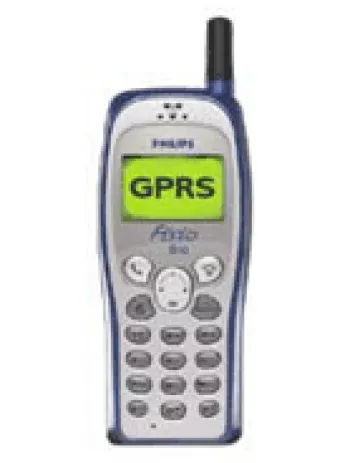
Network and Connectivity
The Philips 535 is equipped with GSM technology, offering support for 2G networks with bands GSM 900 and 1800. While it can handle GPRS Class 10, it does not offer EDGE connectivity. Unlike modern devices that thrive on high-speed internet access and seamless connectivity, the Philips 535 operates in a much simpler era of mobile technology where basic connectivity meets fundamental communication needs.
Launch and Availability
The Philips 535 was announced in the last quarter of 2003 and has been discontinued. During its launch phase, it was introduced as part of a series of feature phones catering to users looking for a blend of simple mobile connectivity and elementary multimedia functionalities.
Design and Build
With dimensions of 98 x 44 x 18 mm and weighing 92 grams, the Philips 535 is compact, lightweight, and easy to handle. It supports a Mini-SIM, enabling users to access mobile networks while the physical design elements reflect a time when phones were smaller and more focused on ergonomics rather than display size. The design aesthetic of the Philips 535 comes in four color options: Silver Digit, Red Lens, Blue Focus, and Black Motion.
Display Characteristics
Featuring a TFT screen capable of displaying 65K colors, the Philips 535's display is modest by contemporary standards. The screen boasts a resolution of 128 x 128 pixels and can show six lines of text at a time. The color TFT display was a novelty at the time, offering vibrant and visually pleasing user experiences for its era.
Memory and Storage
The phone has an internal memory of 1.9MB, with no option for expandable storage via card slots. It accommodates a phonebook with 300 entries, each with up to five fields, and supports photo caller ID. It also keeps records for the last 30 dialed, received, and missed calls, which reflects its design focus on being an efficient communication device.
Camera Specifications
The Philips 535 features a single VGA rear camera. While rudimentary and basic, the VGA camera allows users to capture simple images. However, it does not support video recording or a front-facing camera, indicating its primary function as more of a communication tool rather than a multimedia powerhouse.
Audio and Sound
The device includes a loudspeaker and supports vibration along with downloadable polyphonic ringtones and a ringtone composer. However, it lacks a 3.5mm headphone jack, limiting audio accessories support primarily to its in-built capabilities.
Communication Features
Connectivity options such as WLAN and Bluetooth are not available on the Philips 535; however, it includes an infrared port, a common feature in phones from that period for exchanging data wirelessly over short distances. The absence of GPS and radio further highlight its straightforward feature set, emphasizing primary mobile communication tools and basic data transfer capabilities.
User Interface and Operating System
The Philips 535 runs on a basic feature phone operating system that supports essential messaging formats such as SMS and MMS. It offers a WAP 1.2.1 browser for basic internet access, although this would be quite limited by modern standards. The phone allows users to enjoy a simple gaming experience with its solitary pre-installed game, Brick Game. Notably, it does not support Java, restricting third-party application installations that were starting to gain traction at the time.
Battery Life
The battery powering the Philips 535 is a removable Li-Ion unit. It offers a standby time of up to 300 hours and a talk time of up to 3 hours, balancing user expectations for longevity and usability. The removable nature of the battery allowed users to carry spares, a valued feature at the time for those who needed assurance of uninterrupted device operation.
Conclusion
The Philips 535 encapsulates the transitional phase of mobile technology. While offering a hint of multimedia functionalities with features like a color screen and a camera, it largely retains the simplicity and straightforward usability of earlier mobile phones. Prior generations of cellphone design focused primarily on communication efficiencies, ease of use, and basic entertainment features. The Philips 535 stands as a tangible reminder of mobile technology's evolution, reflecting consumer needs before smartphones became the multipurpose devices they are today.
Main Features of Philips 535
- Compact and Lightweight Design: Dimensions of 98 x 44 x 18 mm and weight of 92 g, making it portable.
- Colorful Display: TFT screen with 65K colors, offering a decent viewing experience.
- Phonebook Capacity: Store up to 300 contacts with photo call feature.
- Camera: Equipped with a VGA camera for basic photography needs.
- Infrared Port: Allows for connectivity with compatible devices.
- Messaging Capabilities: Supports SMS and MMS for comprehensive messaging options.
- Removable Battery: Li-Ion battery providing up to 300 hours standby time and 3 hours talk time.
- Alert Customization: Downloadable polyphonic ringtones for personalized alerts.
- Available in Multiple Colors: Four color options - Silver Digit, Red Lens, Blue Focus, and Black Motion.
Philips 535 Device Drawbacks
- Lacks EDGE support, limiting faster data speeds.
- Discontinued status, no longer available new.
- No external memory card slot for storage expansion.
- Very limited internal storage of only 1.9MB.
- VGA main camera with no video recording capability.
- No selfie camera available.
- No Bluetooth or WLAN connectivity options.
- Does not support positioning features like GPS.
- Absent FM Radio and 3.5mm headphone jack.
- Limited browser capabilities with WAP 1.2.1.
- Only one pre-installed game; lacks Java support for more.
- Short talk time of only up to 3 hours.

View Also
More Phones
All Rights Reserved +14266 Phones © Mobilawy 2025

























